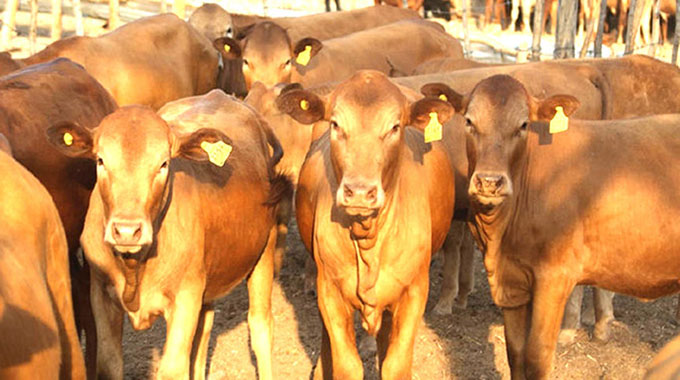Zim benefits from US$6,9m animal health project

Sifelani Tsiko Agric, Environment & Innovations Editor
Zimbabwe is set to benefit from a US$6,9 million project which was launched recently to combat animal trypanosomiasis, a parasitic disease transmitted by biting flies including tsetse that continue to cause serious economic losses for smallholder farmers in Africa.
CIRAD, a French agricultural research and cooperation organization announced that it will coordinate a four-year COMBAT project funded with €5,9 million (US$6,9 million) from the European Union’s H2020 programme to contain the parasitic diseases that now risk being introduced into Europe due to globalisation and environmental changes. The project will aim to improve the knowledge base on animal parasitic diseases, develop innovative control tools, strengthen surveillance, diagnosis and control networks by setting up harmonised epidemiological information systems and national and regional control strategies.
CIRAD said it would also move to strengthen the capacity of African livestock farmers and veterinary services to fight the disease, while raising awareness among policy makers concerned with food security and poverty reduction.
“The strength of this project lies in the fact that it brings together in the consortium both European and African research institutions, as well as the veterinary authorities of target countries.
“The project also has the support of international organisations, first and foremost the FAO, but also the African Union, the OIE, the WHO and the IAEA, which means that it has a major impact on all the stakeholders,” said Alain Boulangé, the project coordinator for CIRAD.
The project will be implemented in 13 endemic countries in Africa with the support of the Food and Agriculture Organisation of the United Nations (FAO). The 13 endemic countries include Zimbabwe, Zambia, Mozambique, South Africa, Ethiopia, Uganda, Sudan, Burkina Faso, Kenya, Chad, Ivory Coast, Senegal and Cameroon.
Experts say African animal trypanosomiasis is a parasitic disease that causes serious economic losses in livestock from anemia, loss of condition and effects on reproduction.
Losses in cattle are quite significant and apart from animals other than livestock, dogs can also be affected. The disease has no vaccine and existing drugs are losing their effectiveness through the development of resistance in the parasites. Experts say existing diagnostic methods are difficult to use in the field, while vector control tools, often not environmentally friendly, need to be improved.
“The direct and indirect impacts of tsetse and trypanosomiasis are estimated at an annual loss of $4,5 billion in Africa. The losses are manifested due to impacts on livestock productivity, on migration and human settlement, on livestock management, on crop production, land use, ecosystem structure and function and human welfare.
“It is evident from this that the three sectors affected by tsetse and trypanosomiasis are human health, livestock health and rural development, thereby placing the challenge at the heart of African rural development,” said Gift Wanda of the African Union-Pan African Tsetse and Trypanosomiasis Eradication Campaign.
Each year in Africa the bloodsucking tsetse fly causes more than US$4,5 billion in agriculture income losses, kills three million livestock and infects up to 75,000 people with trypanosomiasis, according to the UN. Progress in the control of animal trypanosomiasis has been limited over the past 20 years as compared to great strides made in the control of sleeping sickness. Sleeping sickness caused devastating epidemics in the 20th century, but the World Health Organisation has now targeted its elimination. Weining Zhao, a senior FAO animal health officer expressed his “deep appreciation for the launch of this new project to tackle this enormously important health problem, which affects the lives and livestock and environment of millions of vulnerable livestock keepers in Africa.”
“We are confident that the strong engagement of African, European and international institutions will ensure the full achievement of the project objectives,” he said.
Tsetse flies carry trypanosomiasis, a parasite that causes a disease called nagana in livestock and sleeping sickness in humans.
The disease, which affects the nervous system, is a long-standing plague in Africa, causing fever, loss of appetite and in some cases death if untreated.
In the 1980s and 1990s, Zimbabwe made great strides in the elimination of tsetse and animal African trypanosomiasis (AAT) which affects parts of the country to the north, north-west, north-east and south.
However, veterinary experts say advances in recent years have been limited in the country opening previously freed areas to the risk of reinvasion. After foot and mouth disease (FMD) and tick-borne diseases (TBD), animal African trypanosomiasis (AAT) or Nangana is the most economically important livestock disease in Zimbabwe, according to veterinary experts. Experts say Zimbabwe and other endemic countries in Africa need to constantly monitor the distribution and prevalence of these diseases to guide control programmes.








Comments